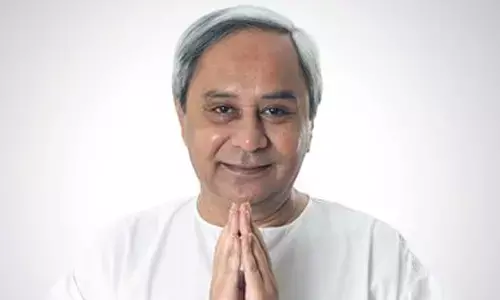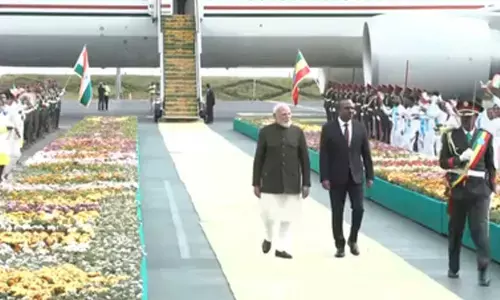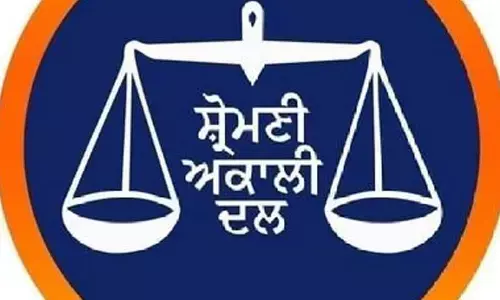GST blow to handloom sector

Goods and Services Tax is one of the toughest of the economic reforms that this government has initiated and it is being touted as the \'greatest\' by the government.
Goods and Services Tax is one of the toughest of the economic reforms that this government has initiated and it is being touted as the 'greatest' by the government.
Perhaps, it is and, may be, it is not. It is for the economists and subject experts to comment more on it. But, when it comes to the handloom sector, it leaves everyone worried. Will the sector survive the GST regime and continue to sustain the millions dependent on it? Several markets have expressed their apprehension over the impact of the GST regime on this sector.
There is a good ground to fear the outcome with regard to the handloom sector in the country. With the government now proposing to levy GST on handloom products at par with other textile products, this sector would only crumble and disappear.
The other day K A N Moorthy, a Member of the All India Handloom Board, in his meeting with the Union Finance Minister, Arun Jaitley, emphasised on the same and sought exemption for the handloom sector from the GST.
It is not known whether this government has the time to study the issue in depth and announce relief to the sector as it wishes to promote handlooms a big way, with the Prime Minister, Narendra Modi, himself becoming its brand ambassador.
The demand of the weaving community from across the country is this: to bring the handloom products and the raw materials vis-a-vis yarn in hank form, Zari, Azo free dyes etc, under 0 per cent GST list to save the weavers as well the traditional handloom industry.
First of all, we should note that the handloom sector is a decentralised one spread over all the States of India. Its employment potential is next only to agriculture with 43.32 lakh workforce. In addition, we should also realise that there is a constant decline in the number of weavers during the past 15 years: While the number was 65 lakh weavers as per the 1995's second census and 43.32 lakh in 2009-2010 (as per the third census).
If we analyse their socio-economic situation some more harsh realities would come to the fore. The handloom weavers are mostly from the most vulnerable sections of the society with OBCs constituting 45.18 per cent, SCs 10.13 per cent, STs 18.12 per cent with others constituting 26.57 per cent.
Again, when it comes to the gender factor, a majority of weavers are women, constituting a whopping 77.90 per cent of the work force.
The handloom industry is mostly rural based with 87 per cent living and working in rural areas and only 13 per cent operating from urban areas of various districts of the different States of the country.
The living conditions are pitiable and 54 per cent weavers live in 'Kutchcha' houses, 31 per cent in semi-pucca houses and only 15 per cent live in pucca houses according to several government surveys. Of these, again, 9.7 per cent of weavers are having AAY cards (Antyodaya Anna Yojana), 36.9 per cent carry BPL (Below Poverty Line) cards, 34.5 per cent carry APL (Above Poverty Line) cards and only 18.9 per cent are ration cards.
Coming to their literacy levels, 29 per cent of the handloom weavers in the country have no schooling at all while 12.7 per cent below primary level qualification, 18.2 per cent have primary level education and 22.9 per cent have reached the middle schools.
As could be expected in our system, the handloom weaver whose sweat and blood are always looted by the middlemen, on an average, one's income is as low as 29, 314 per annum in rural areas of Andhra Pradesh and Rs 31,000 per household in urban areas of the State, as per the calculations of the Handloom Board.
When it comes to the national averages, the rural household incomes are at Rs 38,260 per annum and Rs 33,038 in urban areas. Institutional credit to weavers in minimal with only 14.4 per cent weavers getting credit from the banks while, 44.6 per cent master weavers and 13.4 per cent from the money lenders.
Yet another impediment in their lives is that most of the weavers are in the informal sector: 61.1 per cent are independent weavers while 33.8 per cent work under master weavers and only 5.1 per cent are working with Cooperatives or Clusters.
As for the production, handloom cloth production is 14 per cent of the total textile production with a total of 6,900 million square meters being the output constituting 4 per cent of the GDP (Gross Domestic Product).The exports amounted to Rs 1,662.89 crore in 2010-11.
Despite such a contribution to the GDP and such huge production and its creditable position of the handloom industry in the economic development and employment potential, the stakeholders are leading a miserable and distressed life. This is evident in the suicides that occur on a regular basis in the families of weavers who are impoverished due to various reasons.
About 70 weavers have committed suicides in Varanasi, the constituency of the Prime Minister, Narendra Modi, itself in the last three years. The survey was conducted by RashtraCheneta Jana Samakhya of Chirala of AP.Under the UPA Government, the Textiles Ministry conducted its own survey to assess the quantum of debt of the handloom weavers in the country before the 2014 elections.
The survey revealed that the aggregate figure across the country stood at Rs 3,000 crore. Again two thirds of this loan was on the heads of weavers of UP, Andhra Pradesh (combined), Bihar, Tamil Nadu,Jharkhand and West Bengal.
Rising yard prices and shrinking markets for the finished goods of the handloom sector combinedtogether to heap distress on the weaver community pushing most of them into debt trap.
The crisis is acute in AP, Telangana and Tamil Nadu. Unfortunately, this sector which is only second after the farm sector in supporting a large number of people in the country, does not get enough attention and the suicides only are confined to the local pages of the news papers. For these suicides to get the attention of the media, it always requires the visit of a politician to those families that witness a tragedy.
Come the GST regime, those dependent on the sector face a real crisis with the Government and the GST Council not considering the ground reality in their case.
The Prime Minister has been talking about increasing marketing of handloom products and modernizing the same through cluster approach. Handloom industry expected its revival with his announcements.
In the past when the NDA Government had imposed a 9.25 per cent excise duty on hank yard to the dismay of the sector, the UPA Government revoked the same. Many State Governments, including AP and Telangana Governments gave a relief by withdrawing VAT on handloom production.
The present effort gives one an impression that the Textile Ministry and the Finance Ministry are working at cross purposes. The Government should exempt the handloom products - all varieties reserved under Handloom Reservation Act and the raw materials used for handloom production (yarn in hank form etc) - if it is really committed to the cause of handlooms of the country.
One only wishes that the PM steps in at this crucial juncture and save the handloom sector as also the farm sector – after all, both farmers and weavers take care of two crucial needs 'Roti and Kapda' of the population – from the imposition of GST.
















